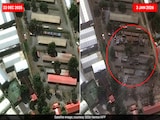The European Space Agency (ESA) is exploring an innovative approach to constructing structures on the Moon fashioning space dust into Lego-like bricks, according to space.com. This novel idea aims to address the challenges of building on the lunar surface by leveraging modular, interlocking bricks that can be easily transported and assembled in space. It will also be a cost effective way since astronauts will use the material found on lunar surface, the outlet further said.
The Concept of Lunar Lego Bricks
ESA's approach involves creating bricks from lunar regolith, the loose, fragmented material covering the Moon's surface. By using a 3D printing technique called "sintering", which involves heating the regolith to just below its melting point to fuse the particles together, ESA can produce robust bricks on the Moon itself. This process reduces the need to transport heavy building materials from Earth, significantly cutting down on costs and logistical challenges.
Benefits of Modular Construction
One of the primary advantages of using Lego-like bricks for lunar construction is their modularity. Just like traditional Lego bricks, these lunar bricks can be easily connected and reconfigured, allowing for flexible and scalable building designs. This flexibility is crucial for adapting to the Moon's harsh and unpredictable environment. Moreover, modular construction can expedite the building process, enabling astronauts to quickly assemble and disassemble structures as needed.
The process of sintering regolith to create bricks will also ensure that the structures are sturdy and can withstand the extreme conditions on the Moon. The bricks' interlocking design also enhances structural stability, which is essential for long-term lunar habitats and research facilities.
Developing housing on the Moon is an emerging focus for space agencies across the world. US space agency NASA has developed the Artemis programme, with an aim that humans will inhabit lunar residences by 2040. The most significant part of the Artemis program is the Lunar Homestead project, which aims to develop the architecture for habitable structures to facilitate prolonged human presence and scientific endeavours on the Moon.















